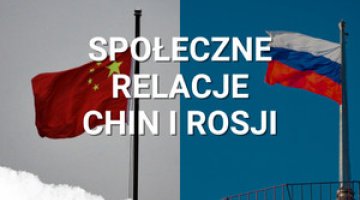Russia freezes the construction of the nuclear power plant in Kaliningrad
Revision of the construction plans
The meeting in Sochi on May 20, at which President Putin and his officials were accompanied by ministers and energy company heads, discussed the issue of electricity supply to the Kaliningrad oblast, among other matters. Three days later a report from Reuters appeared which, citing an unnamed source in Rosatom, reported the changes in the company’s plans for the Baltic NPP. This was confirmed on 24 May by Russian news agencies, which reported that during the meeting the head of Rosatom Sergei Kiriyenko told the daughter companies to consider locating small- and medium-sized reactors on the Baltic NPP site. On 28 May, the Russian daily Kommersant reported that during the Sochi meeting the participants considered two policy options, either the energy isolation of the Kaliningrad oblast, or its connection with the European network; in the paper’s view, the participants were more inclined towards the first solution.
Problems on the construction site
In parallel with the reports in the independent Russian local media about the revision of the project, information appeared in the Kaliningrad oblast from the companies which have been investing in the Baltic NPP (at this point, the concrete for the foundation of the first reactor has been poured the construction of part of its main body has been finished, and the excavation for the second reactor have been done). These reports claim that problems with the general contractor’s payments to subcontractors for the work already performed on the construction site have recently escalated; the site workers have begun to be suspended or laid off. The procedure of withdrawing financial resources through fly-by-night companies has also intensified. The construction companies should have been informed that construction had been suspended (for a period of two years, according to one source). On 4 June, two Kaliningrad-based websites published scans of a document (dated 30 May) in which the director of Atomenergoproyekt (the Baltic NPP’s principal constructor) recommended a revision of the investment and expenses plans for its construction, in connection with a decision to ‘conserve’ the Baltic NPP. This report was immediately denied by Atomenergoproyekt, who issued a different version of the same document. However, on 5 June, a meeting of the Baltic NPP’s coordinating committee was held, at which (according to a statement by Rosatom) the Baltic NPP’s subcontractors heard a proposal to temporarily transfer workers to the construction sites of other nuclear power plants, in Russia (the Kursk NPP and the Rostovskaya NPP) and Belarus (Ostrovets NPP). In an interview with the Belarusian agency Belta on 7 June, a management representative also admitted that some of the Baltic NPP’s construction work would be suspended. In addition, on 3 June a representative of Rosatom’s management, Sergei Boyarkin, expressed confidence that the revised plan would not halt plans to build the first block (1150 MW) of the power plant – which clearly suggests that the construction of the second block is still in question.
Problems with financing the project
Context for this information is given by reports in some Russian media and internet sites about problems with foreign investment in the Baltic NPP. According to the original plans for its construction (the costs of which were estimated to include an accompanying infrastructure of over €6 billion), the plant was largely to have been financed by foreign investors, for whom Rosatom allocated 49% of shares in the Baltic NPP, as well as by loans from foreign banks. More was to come from Rosatom’s own resources, as well as from funding from the state budget (in 2010 the Russian government allocated it US$400 million over a two-year period) and loans from Russian banks. The potential investors mentioned in this context included Italy’s Enel, Germany’s E.ON, France’s EdF and GDF Suez, Finland’s Fortum, the Czech CEZ, and Spain’s Iberdrola; but talks with them failed to produce any results. Moreover, there were reports that a number of the Western banks which Russia had asked for loans (Italy’s Unicredit, Germany’s Hypovereinsbank, France’s BNP Paribas and Société Générale were all mentioned) decided against participating, or avoided taking a final decision. The investment climate was not helped by Siemens’s decision in 2011 to abandon its strategic nuclear cooperation with Rosatom (although France’s Alstom continued its cooperation on the Baltic NPP, by producing the turbines for the power plant).
Problems with selling the energy
Another problem for the Baltic NPP is obtaining foreign customers for the energy it should produce in the future. This is a key issue because the whole Baltic NPP project is based on its exports (Kaliningrad is now self-sufficient in terms of electricity supply, mainly thanks to the two thermal power plant blocks which are already operational). The Russian state company Inter RAO, which was supposed to export energy from the Baltic NPP (and had even pre-contracted a future supply of 1000 MW), had planned for Lithuania (which in recent years has been one of its main customers), Poland and Germany to be its main customers. To this end, Inter RAO had first planned to turn to its existing connections with Lithuania (Sovietsk–Klaipeda), which were to be extended by 2016 to a capacity of 1000-1500 MW. This would have been the cheapest option, as long as the synchronous connection between Baltic states and Russian power grids remained. It was then planned to build an direct intersystem link from Kaliningrad to Poland (Mamonowo–Olsztyn) by 2017, with a total transmission capacity of 600 MW (1140 MW was originally planned), requiring an investment of up to €1 billion. Next, the construction of an undersea power cable from Kaliningrad to Germany was considered (for completion by 2020, with a capacity of 800-1000 MW).
The essential problem, however, was the sceptical attitude of the countries mentioned above. The Lithuanian government has repeatedly stated (most recently in a speech by President Dalia Grybauskaite this May) that it has no intention of importing energy from the Baltic NPP, as it would be a clear competitor to Lithuania’s nuclear power plant project at Visaginas (which the Lithuanian government has not yet halted). The Polish government also plans to build two blocks of its own nuclear power plant, and – despite talks between the Polish and Russian energy companies and network operators, as well as increasing pressure from Russia – has not taken a definitive decision on whether to build the connector, or whether to import energy from the Baltic NPP. Nor have positive statements been forthcoming from Germany, which is focused on the extraction of energy from renewable sources. More bad news for Moscow in this context came in a statement by German foreign minister Guido Westerwelle, who said during a ministerial meeting of the Baltic States’ Council in Kaliningrad on 6 June that the issue of energy imports to Germany from the Baltic NPP “does not presently exist” (previously, in February 2012, the German company RWE denied reports that it planned to purchase energy from the Baltic NPP).
Problems with EU policy
The attitude of the European Union is also of significance for the project. The EU’s priority is to integrate European markets and networks (which are currently divided between two cooperating, under the ENTSO-E structure, systems, the European - formerly UCTE and the Nordic - formerly NORDEL). In this context the creation of the so-called ‘Baltic ring’ network, connecting Central Europe, the Baltic States and the Nordic countries (including LitPolLink, which is to connect Poland and Lithuania), is also important. For this reason, the EU is pushing for Russia to reach an agreement with the Baltic states by the end of 2013 on the latter’s de-synchronisation, i.e. disconnecting from the - post-Soviet Unified Power System (Lithuania, Latvia and Estonia have agreed to do so by 2020); this would mean breaking up the existing so-called BRELL ring (Belarus-Russia-Estonia-Latvia-Lithuania). Russia’s response has so far been critical, citing the costs that it would have to bear. The meeting in Sochi has shown that another reason Russia opposes this move is the problems it would allegedly have in supplying energy to Kaliningrad. A further problem for Russia is that ENTSO-E still does not want to accept the Russian proposal from 2011 to include its planned links between Kaliningrad and Lithuania & Poland into its Ten-Year Network Development Plan (TYNDP), arguing that firstly an agreement must be concluded between the system operators of the countries concerned. This in turn would make it impossible for Russia and its partners in the project to apply for grants to cover the investments of European funds.
Conclusions
Russian reports about both the content and the motives behind the decision to revise the plans to construct the Baltic NPP sound less than plausible. Preparations to build small- and medium-sized reactors on the location of the plant will require fundamental changes in the plans and the construction schedule. It must, in practice, mean a halt to the project for many months. In addition, it seems impossible to simultaneously carry out both the existing and the new construction plans. The main reason for the decision cannot be a potential problem of supplying Kaliningrad oblast with energy because the region is already self-sufficient (according to data from 2011, the production of electricity in the region exceeded its consumption by 50%). Raising the problem of de-synchronisation is therefore merely a pretext, and the real reason for the decision is most likely the problems in securing foreign financing for the investments and selling the electricity abroad. In practice, this means that until foreign investors and customers are found, the Baltic NPP project will not be continued in its present form. As yet it is still unclear how this may affect the realisation of Russia’s next project in the region: the construction of a nuclear power plant at Ostrovets in Belarus.




